#vintagecomputing
Explore tagged Tumblr posts
Text
💾🖥️📖 Inside the Personal Computer: An Illustrated Introduction in 3 Dimensions: A Pop-Up Guide. Text by Sharon Gallagher. Paper engineering and design by Ron van der Meer (1984). Posting this and more as we get our #retrocomputing series ready for next month!












#retrocomputing#vintagepc#retrogear#popupbook#80skids#computerhistory#technostalgia#oldschooltech#vintagecomputing#classicsneverdie#nerdalert#geekculture#papercraft#3dbooks#computermuseum#throwbacktech#vintagetechlove#oldisgold#retrotechvibes#digitalroots
2K notes
·
View notes
Text

Commodore 2001 series The Commodore PET is a line of personal computers produced starting in 1977 by Commodore International. A single all-in-one case combines a MOS Technology 6502 microprocessor, Commodore BASIC in read-only memory, keyboard, monochrome monitor, and, in early models, a cassette deck.
Source: Wikipedia
#retrotech#s#retrocomputing#retrocomputer#retropc#retro#vintagecomputing#retrotechnology#vintagecomputer#vintagetech#vintagepc#oldcomputer#retrogaming#oldcomputers#computer#computinghistory#vintage#technology#retrogamer#computers#vintagetechnology#oldtechnology#vintagehardware#nostalgia#retrocomputers#oldtech#retrohardware#bit
305 notes
·
View notes
Text
1962 Mainframe with Bluetooth
This old computer is comprised of four big boxes, three of which are ever actually used.
The UNIVAC 1219. This is the brains of the system. It controls the operations of every other device. This is what I'm referring to when I'm not gesturing to the UNIVAC 1219 as a whole.
The UNIVAC 1540. This is the DDR, or Digital Data Recorder. It holds, writes, and reads the magnetic tape operators load into the machine.
The Digital to Analog Converter. The UNIVAC 1219 was the first digital computer on most U.S. Navy ships, most of which had analog weapons systems. This hulking mass of steel translated the digital signals from the computer to the analog signals of the weapon systems and vice versa in regards to the radar.
The UNIVAC 1532. The I/O console managed the...you guessed it, input and output of the UNIVAC 1219. You can load and punch paper tape for programs more bite-sized than would be used for magnetic tape.
In addition, we have two teletype machines. You can think of them like typewriters that don't receive human input (except the one that can if we want), but instead output what the computer tells it to. We have a Teletype Corporation teletype that is optimized for character compatability and a Kleinschmidt teletype that is optimized for speed. Both rely on the I/O console to send and receive data.
The real ingenuity begins with the floppy drive. Duane, who's career revolved around this system, developed a way for a floppy drive to imitate the I/O console. The computer thinks it is reading and writing to a paper tape, when it is in fact reading and writing to a 5.25in floppy inside an ancient CNC machine floppy drive.
And this, dear reader, is where the magic happens. This framework was originally built for interfacing with the 1219 via BIN files over Serial port and was easily changed to support BIN files over floppy. Duane has been working on an off adapting our purple converter box with a raspi to let the 1219 read and write BIN files over Bluetooth.
Make no mistake, you cannot simply SSH into this machine as tons of setup and channel changes must be performed to ready it to receive and send data. That being said, I don't see any other UNIVAC mainframes with Bluetooth [or any other running UNIVAC 1219s at all :(], so I will take what I can get.
Can someone tell me how to Tumblr properly?
#VintageComputing#Mainframe#UNIVAC#RetroTech#ComputerHistory#OldTechnology#LegacySystems#HistoricComputers#AntiqueTech#ComputerArchaeology#VintageHardware#ComputingPioneers#UNIVAC1219#ClassicComputing#DigitalArchaeology#computer#new jersey#us navy#u.s. navy#navy#old computers#new blog#new user#technology#tech#vintage computing#retro computing#retro tech#retro#retro computer
152 notes
·
View notes
Text



Testing an IDE Flashdrive…
#commodore#retro#amiga#vintage#classic#HardDisk#RetroVibes#AmigaNostalgia#VintageComputing#RetroGaming#CommodoreLove 💾🕹️#RetroHardware#VintageTech#RetroPassion
47 notes
·
View notes
Text

For commodore 64 Fans :)
#commodore64#retrocomputing#vintagecomputing#commodore 64#c64#classicgames#retrogaming#1980snostalgia#8bitgaming#demoscene#oldschoolgaming#technostalgia#c64games#retro computing#retro tech#80s aesthetic#retro gaming#arcade#game girl#retro gamer#8bit computers#videogame#commodore#8bit#retro#classic#vintage#80s
11 notes
·
View notes
Text

Come and enjoy a coffee on your retro iMac table.
#retro computing#retro tech#retro#retro computer#retro aesthetic#retrotech#retro style#retrocomputing#retrocomputer#Apple#vintage#vintagecomputing#vintage aesthetic#vintage electronics#vintagecomputer#vintage computing#vintage computer#vintage style#vintage apple#retro apple#iMac#00s aesthetic#00s nostalgia#00s#00s core#early 00s#2000s kid#2000s nostalgia#2000s aesthetic#early 2000s
221 notes
·
View notes
Text

school warehouse clearing :3
#crt#vintagecomputing#serial experiments lain#i hope you all appreciate The Tile (tm) as much as i do#seriously them soviets had stuff sorted out. these tiles are the shit.#also they had (have) asbestos.
2 notes
·
View notes
Text











Psion Series 5 Released in 1997. Powered by 2×AA batteries and one backup button cell (CR2032). Battery life: ~20–35 hours of use on AAs; backup cell keeps data for weeks when main batteries are empty. Features include a green backlit monochrome display, full QWERTY/Z keyboard, and built-in software for word processing, calendar, spreadsheets, etc. Weak point: the flex cable between body and screen can fail due to the hinge mechanism. Less severe than in the later Series 5mx, but still a known issue. The Psion series was a popular PDA series next to Palm. Douglas Adams reportedly used a Psion Series 3 to write parts of Last Chance to See.
I bought my Psion 5 around 2006 for ~50 €. Mainly used it for writing travel diaries in the UK and Japan. Switched to a Palm PDA for university a bit later – faster UI access, better desktop sync and compatibility, less fragile.
I used old tech for studying still when smartphones were becoming common. LCD devices were more reliable, the battery was longer lasting, they were not build to distract, and more robust.
I still like this Psion 5 as a portable typing machine. The keyboard is not as good as with the AlphaSmart Neo, but is actually quite decent for such a small device - it can feel slightly mushy, but it's good enough for longer typing in a bus seat or similar.
#psion#psion5#retrotech#vintagecomputing#pda#travelwriting#oldtech#palmpda#series5#writingtools#digitalminimalism#studytools#douglasadams#alphasmart#alphasmart neo
2 notes
·
View notes
Text

Standards? Who needs standards?! 😆
#VintageComputing#RetroComputers#RetroGaming#WallOfRetro#NerdsOfVintage#HappyNerding#TheVintNerd#joysticks
2 notes
·
View notes
Text
Er kommt wieder: 40 Jahre "The Terminator" | heise online
40 Jahre Terminator: 6502-Assembler-Code aus einem Apple-II-Magazin ...
😉
0 notes
Text

#Tech#Computer#RetroTech#Retro#RetroTechnology#RetroComputers#VintageComputer#RetroComputing#Magazine#VintageAd#VintageTech#ComputerHistory
2K notes
·
View notes
Text
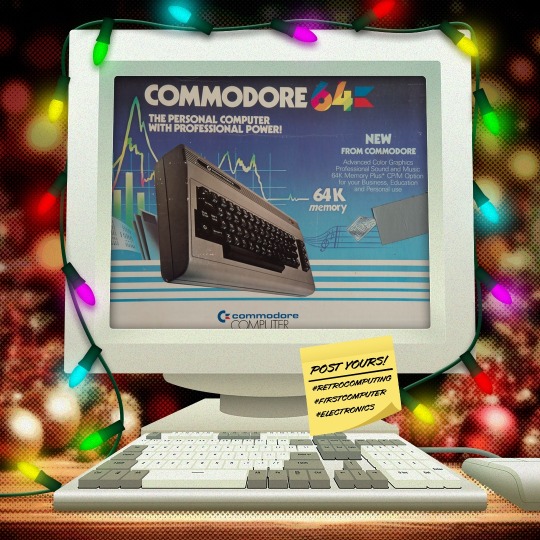
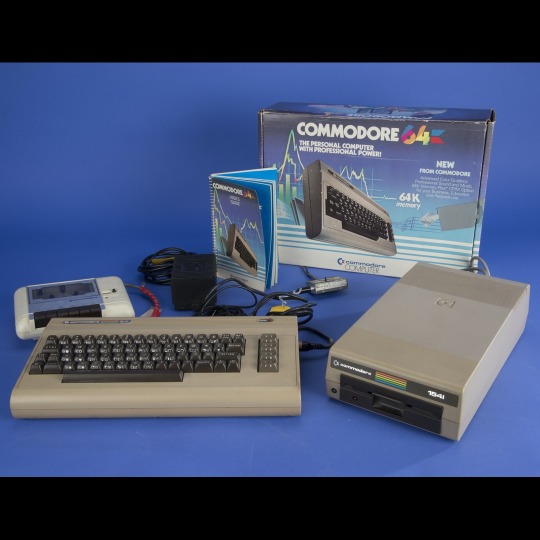
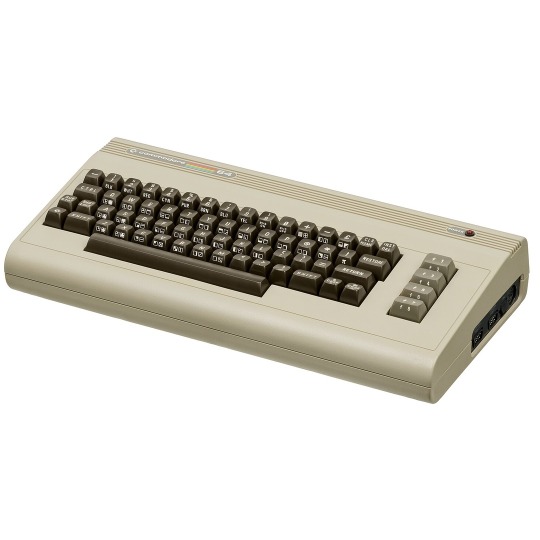
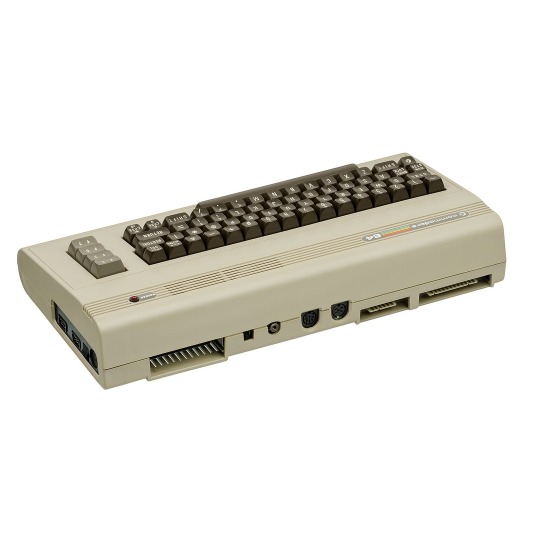
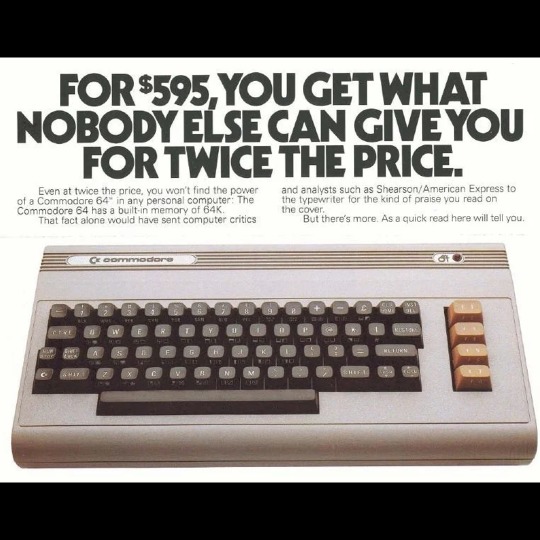
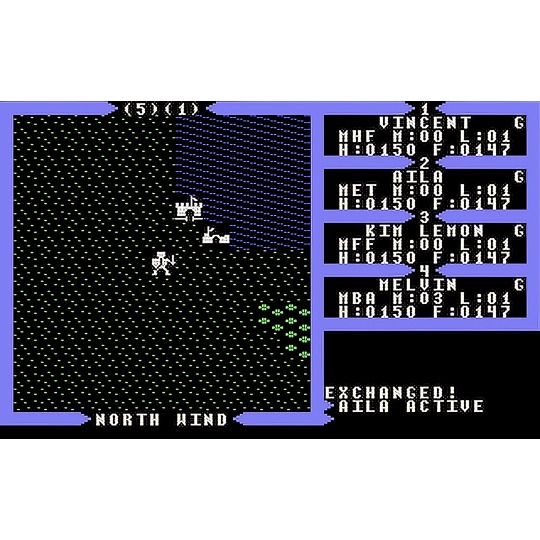
🎄💾🗓️ Day 18: Retrocomputing Advent Calendar - Commodore 64🎄💾🗓️
The Commodore 64, released in 1982, is one of the ones we keep hearing got many people their start in their own computing history. Powered by a MOS Technology 6510 processor at 1.02 MHz and featuring 64 KB of RAM, it became the best-selling single computer model of all time, with an estimated 12.5–17 million units sold. Its graphics were driven by the VIC-II chip, capable of 16 colors, hardware sprites, and smooth scrolling, while the SID (Sound Interface Device) chip delivered advanced audio, supporting three voices with waveforms and filters, making it a lot of fun for gaming and music.
Featured a built-in BASIC interpreter, allowing users to write their own programs out-of-the-box. The C64’s affordability, large software library, lots of games, productivity, and educational applications made it a household name. It connected to TVs as monitors and supported peripherals like the 1541 floppy disk drive, datasette, and various joysticks. With over 10,000 commercial software titles and a thriving homebrew scene, the C64 helped define a generation of computer enthusiasts.
Its impact on gaming was gigantic, iconic titles like The Last Ninja, Maniac Mansion, and Impossible Mission. The C64 also inspired a demoscene, where programmers pushed its hardware for visual and audio effects. The Commodore 64 remains a symbol of computing for the masses and creative innovation, still loved by retrocomputing fans today.
Check out the National Museum of American History, and Wikipedia. https://americanhistory.si.edu/collections/object/nmah_334636 https://en.wikipedia.org/wiki/Commodore_64
And…! An excellent story from Jepler -
== While I started on the VIC 20, the Commodore 64 was my computer for a lot longer. Its SID sound chip was a headline feature, and many of my memories of it center around music. Starting with Ultima III, each game in the series had a different soundtrack for each environment (though each one was on a pretty short loop, it probably drove my folks nuts when I would play for hours). There were music editors floating around, so I tried my hand at arranging music for its 3 independent voices, though I can't say I was any good or that I have any of the music now. You could also download "SID tunes" on the local BBSes, where people with hopefully a bit more skill had arranged everything from classical to Beatles to 80s music.
Folks are still creating cool new music on the Commodore 64. One current creator that I like a great deal is Linus Åkesson. Two videos from 2024 using the Commodore 64 that really impressed me were were a "Making 8-bit Music From Scratch at the Commodore 64 BASIC Prompt", a live coding session (http://www.linusakesson.net/programming/music-from-scratch/index.php) and Bach Forever (http://www.linusakesson.net/scene/bach-forever/index.php) a piece played by Åkesson on two Commodore 64s.
Like so many things, you can also recreate the experience online. Here's the overworld music for Ultima III: https://deepsid.chordian.net/?file=/MUSICIANS/A/Arnold_Kenneth/Ultima_III-Exodus.sid&subtune=1 -- the site has hundreds or thousands of other SIDs available to play right in the browser.
Have first computer memories? Post’em up in the comments, or post yours on socialz’ and tag them #firstcomputer #retrocomputing – See you back here tomorrow!
#commodore64#retrocomputing#vintagecomputing#computermuseum#classicgames#retrogaming#1980snostalgia#mos6510#vicii#sidchip#gaminghistory#computerhistory#personalcomputing#programming#8bitgaming#demoscene#computerscience#classiccomputers#homecomputing#nostalgiamachine#oldschoolgaming#historicaltech#technostalgia#c64games#gaminglegends#codinghistory#earlycomputers#floppydisk#techmuseum#retrotech
82 notes
·
View notes
Link
Restoration of an IBM ThinkPad 701c with “butterfly” keyboard https://cstu.io/84c21b
0 notes
Note
Does your 1219 have a nickname?
Also, I was wondering if you have any fun stories surrounding it! Strange quirks it has or anything like that.
I'd love to see more photos if you're allowed to post them!
Thanks for the question! These are my favorite part about my blog by far.
Not exactly, the UNIVAC 1219 doesn’t have a nickname. I did realize recently that I should specify the pronunciation (Twelve-Nineteen), but it doesn’t have any nicknames. Apart from ‘the 1219’, it’s also regularly referred to as the CPU or just ‘the computer’.
Fun stories or weird quirks? Boy, I could fill a book with this machine’s weird quirks (or as we say, intermittent issues), but I’ll try to blitz through the most common ones:
Sometimes the computer will stop running and enter a WAIT mode. No reason, it just needs a break. We can’t fix it, it just has to decide to go back into operating mode.
The computer will often start attempting to communicate on IO channel 13. We’re not telling it to talk to anything, it just decides to try to.
One of our teletypes (the Kleinshmidt) stamps ink splotches into the paper rather than characters most of the time. However, this weekend it worked for the first time in 10 months! We didn’t change anything, it just had an extra cup of coffee or something.
The Digital Data Recorder, or the tape drive, has the most gremlins out of any of our units. The top handler works fairly well, but the bottom handler won’t properly read data, write data, move the tape forward, initialize the tape, or any number of other issues.
There’s more but hopefully this satisfies your curiosity.
Fun stories? Well, I can’t name any specific ones, but I can say it’s a very endearing machine. It’s the very last of its kind and being one of three individuals in the world responsible for it makes every issue that more frustrating. There is no real forum for it, the subject matter experts sit next to me and are often just as exasperated as I am.
But the unique nature of this situation make every successful diagnostic test that much sweeter. Every new addition (5.25” floppy drive via serial) that much cooler. I have an IBM PC-XT clone at home, but I thank my lucky stars every day that this big iron is what I get to specialize in.
As for more photos, I have none that are as grandiose as you would probably expect. I do have my working photos though. I took all my photos when I first started working on it and now I am more dedicated to fixes than photo-ops.

This is a photo of our finicky Kleinshmidt teletype. Still has blotches but it actually printed!

This is the back of the bottom handler. Pictured is the vacuum pump in the bottom left (so sudden stops just yank magnetic tape slack rather than ripping tape). The big cylinder in the center is a motor for running the magnetic tape handler itself. The big black ‘hose’ of wires coming out of the steel plate contains all the cables that come right off the handler’s head for reading and writing data!
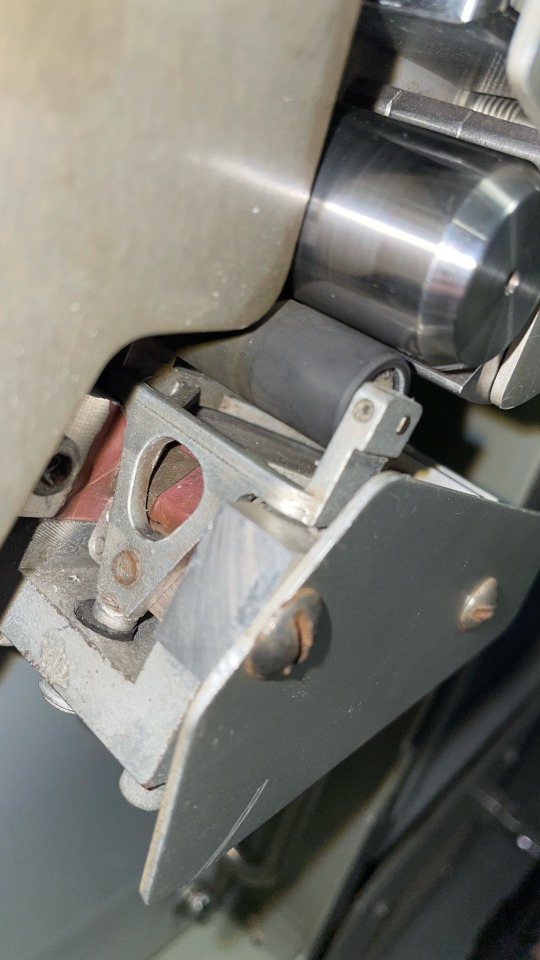
This is the forward pinch roller of the bottom handler. It was replaced after this photo was taken as you can see the rubber has deteriorated in the 55 years this machine has been operating.
As for being allowed to post photos, that’s not an issue. The last 1219 was decommissioned in 2014 and now you can find all of its documentation online at http://www.bitsavers.org/pdf/univac/military/1219/
#vintagecomputing#mainframe#antiquetech#digitalarchaeology#navy#new jersey#oldtechnology#retrotech#tech#univac#new blog#computerarchaeology#computerhistory#old technology#old computers#vintagehardware#classiccomputing#technology#retro tech#big iron#computer
64 notes
·
View notes
Text

Finally, a new (used) keyboard membrane for my Amiga 600
#Commodore#Amiga#RetroComputing#RetroGaming#VintageComputing#90sComputing#retro#vintage#classic#Workbench#RetroHardware#ClassicComputer#Nostalgia
34 notes
·
View notes
Text
Blast From The Past: The Best Budget Desktop Of August 2003!
💰🖥️ Relive the magic of August 2003 with the best budget desktops! 🚀💻 Nostalgic charm, affordable performance, and upgrade potential await.
#BudgetDesktop#TechNostalgia#AffordableComputing#2003Throwback#PCRevival#RetroTech#BudgetPC#VintageComputing#MemoryLane#TechJourney
0 notes